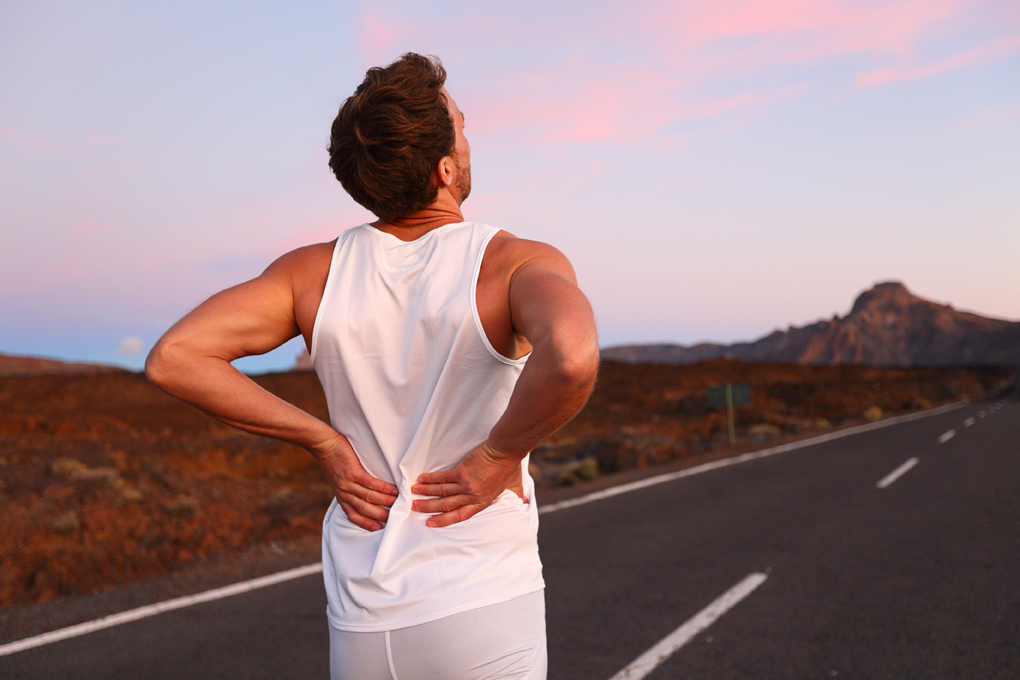7 Common Workout Injuries and How to Avoid Them
As my ruthless and merciless coach always says, “No pain, no gain and you have to risk it to get the biscuit.” True as this may be when it comes to making physical progress in your workouts, there are exceptions you need to keep an eye out for.
I mean, you are human after all and there is only so much punishment that your body can take… even machines wear out. So, here are 7 common workout injuries that you should know about and great tips on how to prevent them from happening in the first place.
-
The Famous Ankle Sprain
 This commonly affects runners and joggers. Not only does this hurt like hell, it could also bench you for an entire month. If you’re a fitness fanatic like me, then that is a nightmare of profound proportions. You can easily get this running outside in uneven terrains like a rocky pathway.
This commonly affects runners and joggers. Not only does this hurt like hell, it could also bench you for an entire month. If you’re a fitness fanatic like me, then that is a nightmare of profound proportions. You can easily get this running outside in uneven terrains like a rocky pathway.
Jumping on and off a pavement can also mess you up pretty badly. Even the treadmill doesn’t keep you safe from this: classic causes include jumping off too quickly or mistakenly stepping half on the belt and half off of it while it’s still running – ouch!
Preventive Measures:
The first and most important tip is to get yourself a quality pair of running shoes. The next thing you want to do is pick out a good old ankle brace just to be on the safe side. Once those are in check, you may need to rethink the terrain you run in.
Though running through the forest is a fantastic idea, make sure the path you pick is even with no rocky features or too many roots popping up all over the place.
And if you have to run indoors on your treadmill, then it is highly recommended that you get one with a clip that attaches to your clothes so that it turns off when the clip detaches from the treadmill.
-
The Excruciation Shin Splints
You will know you have this when you get a sharp pain on the inner side of your shin bone every time you put weight on your leg. This is another common one among runners.
Although other activities that involve a lot jumping, like rope skipping, can also give you these. It is caused by a muscular inflammation and is the result of suddenly bumping up the volume of your current workout regimen.
Working out on hard, paved surfaces or using old, worn out shoes can also give you problems. You may need a doctor’s opinion once you start getting the symptoms. Some painkillers and a few weeks off should get you back up and running.
Preventive Measures:
As with ankle sprains, you will also need a good pair of running shoes for the splints. Next up, make sure that you stretch and warm up properly prior to your workout.
A few light bodyweight exercises and dynamic stretches are always a good idea. Make sure you use static stretches after your workouts to cool you off as well. As for your workouts, take it easy with the intensity increments. Don’t go higher than 10% percent with your frequencies or volumes every time you decide to take things to the next level.
-
The Agonizing Lower Back Strains
 A sudden pain in your lower back accompanied by some tenderness could be a sign that you’ve hit the threshold. This happens when you tear the muscles or ligaments in your lower back, especially the lumbar muscle.
A sudden pain in your lower back accompanied by some tenderness could be a sign that you’ve hit the threshold. This happens when you tear the muscles or ligaments in your lower back, especially the lumbar muscle.
Squatting and dead lifting with improper form or with excessively heavy weight could definitely put you at high risk. Skipping warm ups and stretches and doing side bends can also get you to this unpleasant point. Another reason could be a hunched back that causes you to overcompensate by bending backward by the lower back for upward presses. Worst-case scenarios include developing nerve compressions and herniated disks.
Preventive Measures:
First thing’s first, never skip your pre-workout warmup sets and stretches. These will get the blood flowing down lower back so that it can absorb all the stress from your workout. If you have a hunched back, then you need to start doing wall squats.
It is highly advisable to superset all the exercises in your workouts with this so as to fix your problem. Variety is key here so be sure you keep switching between workouts to improve the endurance of your lower back muscles. Lastly, your form for squatting and deadlifting should be flawless, done with the weight that you are comfortable with.
-
The Busted Rotator Cuff
This one is common among weight lifters in the gym (or anywhere else for that matter). If you’re having pain in your shoulder every time you raise your arm over your head or reach behind your back, then this is probably the culprit.
It is made up of 3 muscles that attach the edge of the scapula to the top point of the upper arm. The work of these muscles is to rotate your shoulders externally.
The pain we are talking about here occurs because of a strength imbalance between these muscles and the deltoids. This results in an impingement or a tear in one of the muscles of the rotator cuff.
Preventive Measures:
This is a highly neglected muscle for most weightlifters. It is very rare to see anyone do any kind of external rotation exercise in the gym. This is where all the problems start. So, you need to integrate external rotation exercises to balance out strength between the rotator cuff and the deltoids. Exercises such as side-lying external rotation with dumbbells should become a staple among your shoulder workouts.
-
The Classic Pec Tear
This happens when you tear either your chest muscle or the tendon that attaches it to the upper arm – quite the agonizing ordeal. This also happens among weight lifters within the famous benching community.
Every time you make up your mind to bite more than you can chew by adding too much weight on the bench press or chest flyes, you run the risk of getting this dreadful injury. You will feel the tear immediately when it happens before your upper arm turns color to blue-black.
Preventive Measures:
This has been said so many times, it feels cliché saying it all over again. But I’m going to say it anyway – leave your ego outside the doors of the gym. Just because overload causes muscle growth doesn’t mean you should go all Hercules with the weights.
Choose the weight that’s right for you, especially for the dumbbell bench press and pec flyes. It is also a good idea to have a spotter around so you don’t end up dropping the dumbbells behind you, causing you to overstretch your pec, resulting in the tear.
-
The Old Rupture of the Bicep Tendon
If you are a curl junky, then you need to pay close attention here. This happens when the tendon attaching your bicep to your forearm tears and curls upwards.
It is extremely painful and it is caused by curling too heavy and uncontrolled movement that causes the arm to drop suddenly with the dumbbell or barbell in hand. If it happens to you, your bicep will become larger than usual with a blue-black coloration.
Preventive Measures:
As we said with the Pec tear, keep your ego in check and lift what you can handle. You will also want to control the weights on the way down – very important. In fact, it is this portion of the exercise, the eccentric, which comes with the most gains. So don’t neglect it. It will give you great gains and keep your bicep tendons rupture free.
-
The Dreadful Hernia
Whether this is grosser than it is scary, I’m not very sure. It involves swelling, mostly around the belly, caused by protruding organs that tore through their encasings (ie, fascia). This is common among lifters and calisthenics enthusiasts. It happens when you hold your breath as you lift heavy objects.
 This results in increased pressure that causes organs, like intestines, to pop through their encasings resulting in the bulge. Rotating your torso during one-arm dumbbell rows can also get you here. You most definitely want to dial 911 if this happens.
This results in increased pressure that causes organs, like intestines, to pop through their encasings resulting in the bulge. Rotating your torso during one-arm dumbbell rows can also get you here. You most definitely want to dial 911 if this happens.
Preventive Measures:
Again, keep your ego in check and only lift what you can handle. The next thing you want to do is learn to breathe out through the concentric part of any exercise and breathe in during the eccentric. Also, keep your body from rotating every time you do those one-armed dumbbell rows.
For the long term, it is a good idea to strengthen your abdominal muscles so that your core is strong enough to even out imbalances that could lead you to get a hernia.
Tony John is a blogger and main Co-founder/ Editor at the BoostBodyFit.com. He loves fitness and bodybuilding. Follow BoostBodyFit on Twitter @boostbodyfit.
